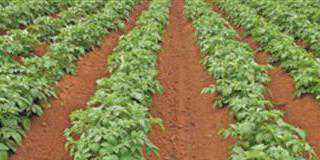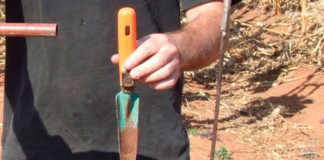New vegetable farmers often start their crops off well, but then fail to feed them enough so that they continue to grow vigorously. Many people ask me why their crops are a light colour and not growing.
Often farmers will apply fertiliser, manure or both, and believe they have “fed” their plants, and their only worries are now controlling pests, diseases and weeds. The problem is that you need to apply several types of fertiliser because each type has different elements and helps the plant in a different way.
If one element isn’t available, the plant could stop growing or become diseased. Think of a water tank. If it has a hole, you can fill it up only to where the hole is. The same applies to a fertiliser deficiency.
The least-available fertiliser element is the “hole” and growth will stop here.
Most fertiliser elements remain in the soil until used up, but not nitrogen. It leaches out of the soil readily due to irrigation or rain, and can even escape into the air. This means that for most crops we have to add nitrogen.
Plants that are grown for their vegetative parts generally need more nitrogen than root or fruiting crops. Cabbages and Swiss chard, for example, need much more nitrogen than carrots and turnips.
For these “nitrogen-hungry”crops, you should apply side dressings of nitrogen regularly to ensure there’s sufficient at all times.
If parts of the plant become lighter in colour, nitrogen levels are too low. This often occurs first in depressions, as water collects here and more nitrogen is washed out of the soil. If you see these symptoms, add nitrogen to the whole crop before your yield is affected.
The most effective way to apply nitrogen is to use limestone ammonium nitrate (LAN). This works best because half of the nitrogen is available to the plant immediately and half is used later. Nitrogen can burn your crop, so this half-half configuration is safer.
Be careful not to apply LAN too close to the stems of plants, or allow it to collect on leaves. When dew wets it at night, it will burn these areas. It’s also best to apply LAN just before irrigation. Finally, remember to plant only as much crop as you can afford to look after and fertilise properly.
Contact Bill Kerr on 016 366 0616 or email [email protected].
Caption:
Transplanted crops need a side dressing about a week after planting. Apply near to, but not touching, the crop.
BILL KERR













